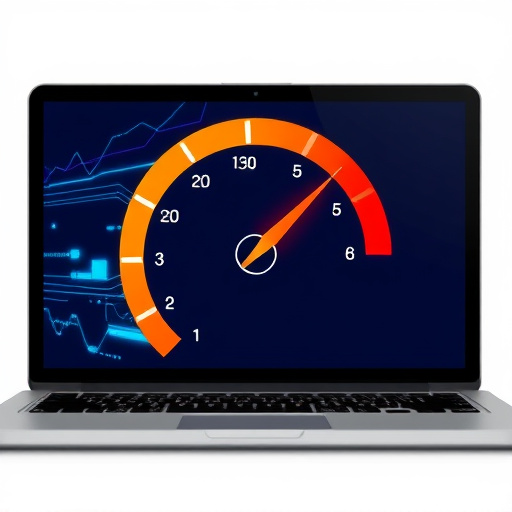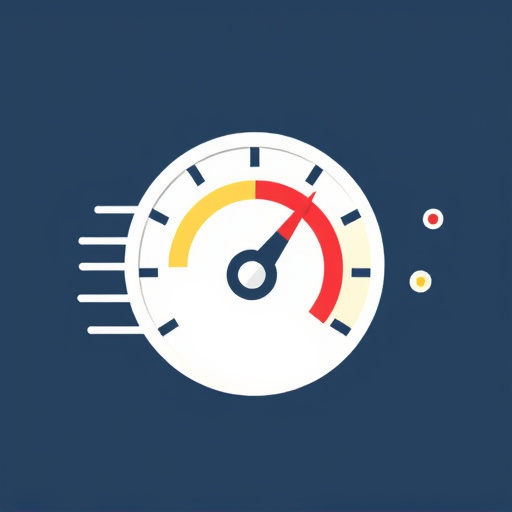Optimizing images, assets using WebP/JPEG 2000, lazy loading, and minifying code improves website speed for better SEO performance. Browser caching reduces load times, enhances user experience, and boosts search engine rankings. Minimizing HTTP requests, simplifying layouts, and using compression techniques like gzip or Brotli also speed up sites globally. CDNs distribute content across servers, minimizing latency and enhancing global user experiences. Lazy loading delays non-essential content, reducing initial page load times for improved engagement.
Looking to boost your website’s performance and improve SEO? Reducing page load time is a key strategy that can significantly enhance user experience and search engine rankings. This article explores proven best practices, including optimizing images, leveraging browser caching, minimizing HTTP requests, enabling compression, utilizing Content Delivery Networks (CDNs), and implementing lazy loading. By adopting these techniques, you’ll not only speed up your site but also elevate its overall SEO performance.
- Optimize Images and Assets for Faster Loading
- Leverage Browser Caching to Reduce Load Times
- Minimize HTTP Requests: Keep It Simple
- Enable Compression to Shrink File Sizes
- Use Content Delivery Networks (CDNs) for Global Reach
- Implement Lazy Loading for On-Demand Content Display
Optimize Images and Assets for Faster Loading

Optimizing images and assets is a key strategy to significantly improve your website’s speed, directly impacting its SEO performance. Large images and slow-loading files can greatly hinder user experience and search engine rankings. To enhance online visibility with faster website loads, consider these tips for increasing website speed and SEO: compressing images without losing quality, using modern image formats like WebP or JPEG 2000, and implementing lazy loading techniques to load assets only when they’re visible on the screen.
Additionally, reducing the number of HTTP requests can speed up your site’s loading time. This can be achieved by combining multiple CSS and JavaScript files into single optimized versions, using a Content Delivery Network (CDN) to serve static content from geographically closer servers, and minifying HTML, CSS, and JS code to remove unnecessary characters. These reduce website page load time strategies ensure that visitors enjoy a fast, responsive site—a factor search engines like Google consider when ranking web pages.
Leverage Browser Caching to Reduce Load Times

Leveraging browser caching is an effective strategy to significantly reduce page load times and enhance user experience, ultimately improving your website’s speed and SEO performance. When a user visits your site, their browser requests and receives various resources like images, scripts, and stylesheets. By enabling caching, these resources are stored locally on the user’s device for subsequent visits. This way, when the same assets need to be downloaded again, the browser can retrieve them from the cache, speeding up page load times considerably.
This technique is especially beneficial for optimizing site speed for improved search engine results and boosting website speed for higher rankings. It allows your web pages to load almost instantly during repeat visits, ensuring that users have a seamless experience and encouraging them to explore more of your content. Additionally, it helps in improving the overall online presence of your brand by demonstrating fast loading times, which are known factors influencing search engine rankings and user retention. Find us at boost website speed for higher rankings and discover the impact of optimized site speed on your business’s digital footprint.
Minimize HTTP Requests: Keep It Simple

Minimizing HTTP requests is a powerful strategy to improve your website’s speed and, by extension, its SEO performance. Each time a user visits your site, numerous resources are requested, leading to longer load times. By keeping the number of requests low, you streamline the process, ensuring faster loading speeds. This simple yet effective technique allows your web pages to communicate more efficiently with users, reducing latency.
Simplifying your website’s structure can significantly impact its performance. Avoid complex layouts and excessive elements that may hinder speed. Instead, focus on delivering essential content promptly. Visit us at Website Speed Solutions for enhanced user engagement anytime; remember, an optimized site means better retention and a higher likelihood of capturing new traffic.
Enable Compression to Shrink File Sizes

Compression is an effective strategy to reduce page load time and significantly enhance your website’s performance. By enabling compression, you shrink the sizes of various files, including images, CSS, and JavaScript. This simple step ensures that visitors receive smaller file transfers, resulting in faster loading pages. A quicker website not only improves user experience but also plays a crucial role in boosting search rankings; Google, for instance, prioritizes sites with fast load times in its algorithms.
When optimizing your site, consider using modern compression formats like gzip or Brotli, which can further reduce file sizes without noticeable quality loss. Additionally, enabling server-side compression and utilizing content delivery networks (CDNs) can distribute the load across multiple servers, ensuring faster delivery of compressed files to users from various geographical locations. Find us at improve site speed for a better online presence, and you’ll discover that these simple website optimization techniques can make a substantial difference in your site’s overall performance.
Use Content Delivery Networks (CDNs) for Global Reach

Content Delivery Networks (CDNs) are an effective way to reduce page load times and significantly enhance user experiences, especially for global audiences. By distributing content across multiple servers in different geographical locations, CDNs ensure that users from various regions can access your website with minimal latency. This is crucial for improving website speed for better SEO performance, as search engines favor fast-loading sites, and a global reach can boost your online visibility.
For instance, if you’re concerned about speeding up my website for mobile users or how to quickly improve website page speeds, leveraging CDNs can be a game-changer. These networks cache static content, such as images, videos, and CSS files, closer to the user’s location, reducing the time it takes to fetch these resources. This method not only optimizes web page loading times but also ensures that your website remains responsive and efficient, providing an excellent user experience that keeps visitors engaged and encourages them to explore further.
Implement Lazy Loading for On-Demand Content Display

Lazy loading is a powerful technique to significantly improve website speed and enhance user experience, especially when dealing with on-demand content. This strategy delays the loading of certain resources until they are actually needed, typically based on user scrolling or interaction. For instance, if you have an article with numerous images or videos that could slow down your site, lazy loading ensures these assets load only when the user scrolls near them. This simple approach can drastically reduce initial page load times, providing a smoother experience for visitors and positively impacting search engine optimization (SEO). By optimizing content delivery in this manner, websites can achieve better online visibility and higher conversion rates, as faster loading times are a crucial factor in keeping users engaged.
Visit us at Website Speed SEO Strategies for Better Conversion Rates Anytime to explore more such techniques that can transform your online presence. Implement lazy loading and other best practices to fix slow website problems once and for all, ensuring a seamless user journey that encourages repeat visits.
By implementing these best practices, from optimizing images and leveraging browser caching to utilizing CDNs and lazy loading, you can significantly reduce page load times. These improvements not only enhance user experience but also contribute to better SEO performance by boosting your website’s speed and global accessibility. Remember, a faster-loading website is a happy user’s website.
